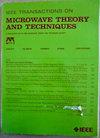A 192–229-GHz 4.4-dBm CMOS Frequency Tripler With Slotline-Based Drain Harmonic Shaping
IF 4.1
1区 工程技术
Q2 ENGINEERING, ELECTRICAL & ELECTRONIC
IEEE Transactions on Microwave Theory and Techniques
Pub Date : 2025-01-22
DOI:10.1109/TMTT.2025.3529081
引用次数: 0
Abstract
Frequency triplers in CMOS processes are seldomly explored in the terahertz (THz) band due to the low output power. To address this challenging issue of output power, this article proposes a drain harmonic shaping method for frequency triplers. For theoretical analysis, a modified Enz-Krummenacher–Vittoz (EKV) model suitable for third harmonic analysis is presented for the first time. Using this model, the optimal waveform at drain is derived and the third harmonic generation is analyzed in detail. Compared to conventional triplers, the proposed approach optimizes harmonic utilization at both the drain and source by enhancing the third harmonic through strengthening the second harmonic at the drain and weakening it at the source. Slotline (SLOT) with common-mode (CM) rejection is used to independently control odd- and even-order harmonics, while the SLOT-based output network is designed for both drain harmonic shaping and power combining. For validation, a frequency tripler in 40-nm bulk CMOS technology is fabricated and measured. The proposed tripler achieves a saturate output power (求助全文
约1分钟内获得全文
求助全文
来源期刊

IEEE Transactions on Microwave Theory and Techniques
工程技术-工程:电子与电气
CiteScore
8.60
自引率
18.60%
发文量
486
审稿时长
6 months
期刊介绍:
The IEEE Transactions on Microwave Theory and Techniques focuses on that part of engineering and theory associated with microwave/millimeter-wave components, devices, circuits, and systems involving the generation, modulation, demodulation, control, transmission, and detection of microwave signals. This includes scientific, technical, and industrial, activities. Microwave theory and techniques relates to electromagnetic waves usually in the frequency region between a few MHz and a THz; other spectral regions and wave types are included within the scope of the Society whenever basic microwave theory and techniques can yield useful results. Generally, this occurs in the theory of wave propagation in structures with dimensions comparable to a wavelength, and in the related techniques for analysis and design.
 求助内容:
求助内容: 应助结果提醒方式:
应助结果提醒方式:


